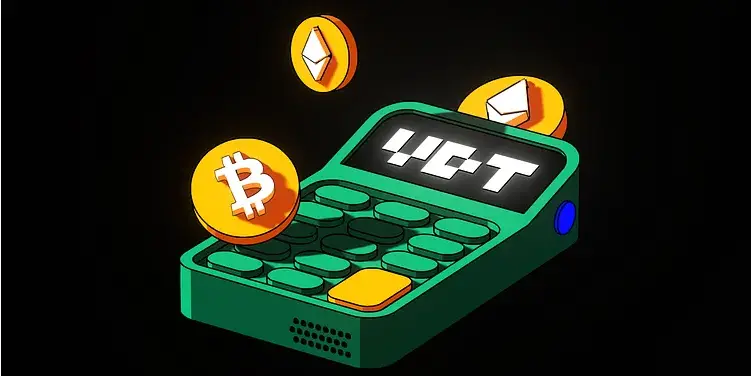2025 Crypto Market Survival Game: Regulatory Dividends, Technological Revolution, and Trillion-Dollar Capital Competition

I. Regulatory Dividend: Global Policy Shift and Geopolitical Games
- The Rise of the "Crypto Utopia" in the United States
Policy Easing: The Trump administration promoted a Bitcoin strategic reserve plan, repealed the SAB 121 clause that restricted banks from custodying crypto assets, and the new SEC chairman Paul Atkins proposed "guided regulation," clarifying the securities nature of tokens and exploring compliance pathways.
Institutional Entry: Bitcoin ETF assets under management surpassed 1.1 million BTC (with BlackRock's IBIT accounting for 45%), traditional financial institutions like Goldman Sachs and JPMorgan accelerated their layouts, and CME launched Solana futures contracts to solidify pricing power.
Underlying Risks: U.S. national debt exceeded $36 trillion, facing downgrade risks, and if a U.S. debt crisis triggers liquidity tightening, the crypto market may crash in tandem.
- Defensive Strategies of China and Emerging Markets
Financial Security Threats: Former Deputy Governor of the People's Bank of China Chen Yulu pointed out that the global expansion of dollar stablecoins and Bitcoin is squeezing the internationalization space of the RMB, while DeFi regulatory arbitrage weakens domestic technological competitiveness.
Competition for Technical Standards: The U.S. dominates in areas like ZKP and Layer 2, the EU integrates regulation through the MiCA framework, and China faces pressure from blockchain companies relocating, needing to be wary of losing standard-setting power.
- Regulatory Arbitrage and Global Coordination
- The Game under the G20 Framework: Countries are accelerating the formulation of digital asset rules, with the U.S. attempting to incorporate cryptocurrencies into its financial hegemony, while China counters the dollar's dominance with the digital RMB.
II. Technological Revolution: Layer Wars, AI Integration, and the Rise of DePIN
- Ethereum Revival and Layer 2 Competition
Pectra Upgrade: Ethereum optimizes account abstraction, L2 compatibility, and staking mechanisms, aiming to reduce gas fees and enhance security, with staking rates expected to exceed 50% and TVL potentially reaching $300 billion.
Public Chain Landscape Differentiation: Base chain (Coinback ecosystem) TVL surpassed $40 billion, Solana achieved 100,000 TPS through the Firedancer client, and Sui and HyperLiquid captured niche markets with modular architectures.
- AI + Blockchain: From Tools to Autonomous Participants
On-chain AI Agents: NEAR co-founder predicts that by 2025, AI agents will manage crypto wallets, execute trading strategies, and even become KOLs on social platforms, with VanEck data indicating their numbers will exceed 1 million.
Technical Integration Bottlenecks: High costs of AI model training, controversies over algorithm transparency, and regulatory scrutiny may limit large-scale applications.
- DePIN: The Industrial Revolution of Decentralized Infrastructure
- Case Breakthroughs: Hivemapper mapped 30% of global roads with 150,000 contributors, generating over $500 million in annual revenue; the Filecoin Foundation promotes the integration of AI and DePIN to address data storage and computing power bottlenecks.
III. Trillion-Dollar Capital Game: The Struggle between Institutions, Retail Investors, and Stablecoins
- Institution-led "De-Retailization" Trend
Bitcoin ETF Siphoning Effect: BlackRock's IBIT management scale surpassed $40 billion, with pension funds and sovereign wealth funds entering, promoting the narrative of Bitcoin as a "safe-haven asset," yet 80% of holdings are still controlled by retail investors.
RWA Tokenization Explosion: Ondo Finance's tokenization of U.S. debt reached $2.8 billion, with an annualized yield of 4.44%; Maple Finance issued loans of $2.46 billion, attracting Grayscale and Pantera to increase their positions.
- Stablecoins: Payment Revolution and Tools of Dollar Hegemony
Market Scale Surge: The market capitalization of stablecoins reached $193 billion, potentially exceeding $3 trillion within five years, with cross-border payment costs reduced by 60%, but Tether's reserve transparency controversy poses a potential black swan.
Geopolitical Weaponization: The U.S. consolidates its global reserve status through dollar stablecoins, seizing Russian crypto assets during the Russia-Ukraine conflict, highlighting the threat of digital financial hegemony.
Regulatory Crackdown Warning: The U.S. Congress is discussing legislation to restrict "politicians issuing coins," which, if passed, could trigger a sector-wide collapse.
IV. Future Pathways: Reshaping Industry Value Between Frenzy and Rationality
- Investor Strategies: Balancing Defense and Offense
Core Allocation: Bitcoin (40%) + Ethereum (20%) + RWA Leaders (like ONDO, 20%), with long-term targets of $180,000 for Bitcoin and $8,000 for Ethereum.
Risk Hedging: Retain 30% in stablecoins (USDC/DAI) and buy Bitcoin put options (strike price $75,000).
- Industry Survival Rules
Breaking Free from Policy Dependence: The fulfillment rate of Trump's promises is only 31%, necessitating a shift from "regulatory arbitrage" to intrinsic technological value, such as integrating DeFi protocols with traditional financial infrastructure.
Prioritizing Technological Innovation: The implementation capabilities of Ethereum Layer 2, AI agents, and DePIN will determine long-term competitiveness, avoiding the bubble of homogeneous public chains.
- Predictions for the Global Landscape
Escalation of U.S.-China Confrontation: U.S. crypto hegemony squeezes China's digital financial space, while China counters with digital RMB and blockchain technology autonomy.
Competition for Technical Standards: Underlying technologies like ZKP and Layer 2 become strategic high grounds, with the EU's MiCA framework potentially creating new barriers.










